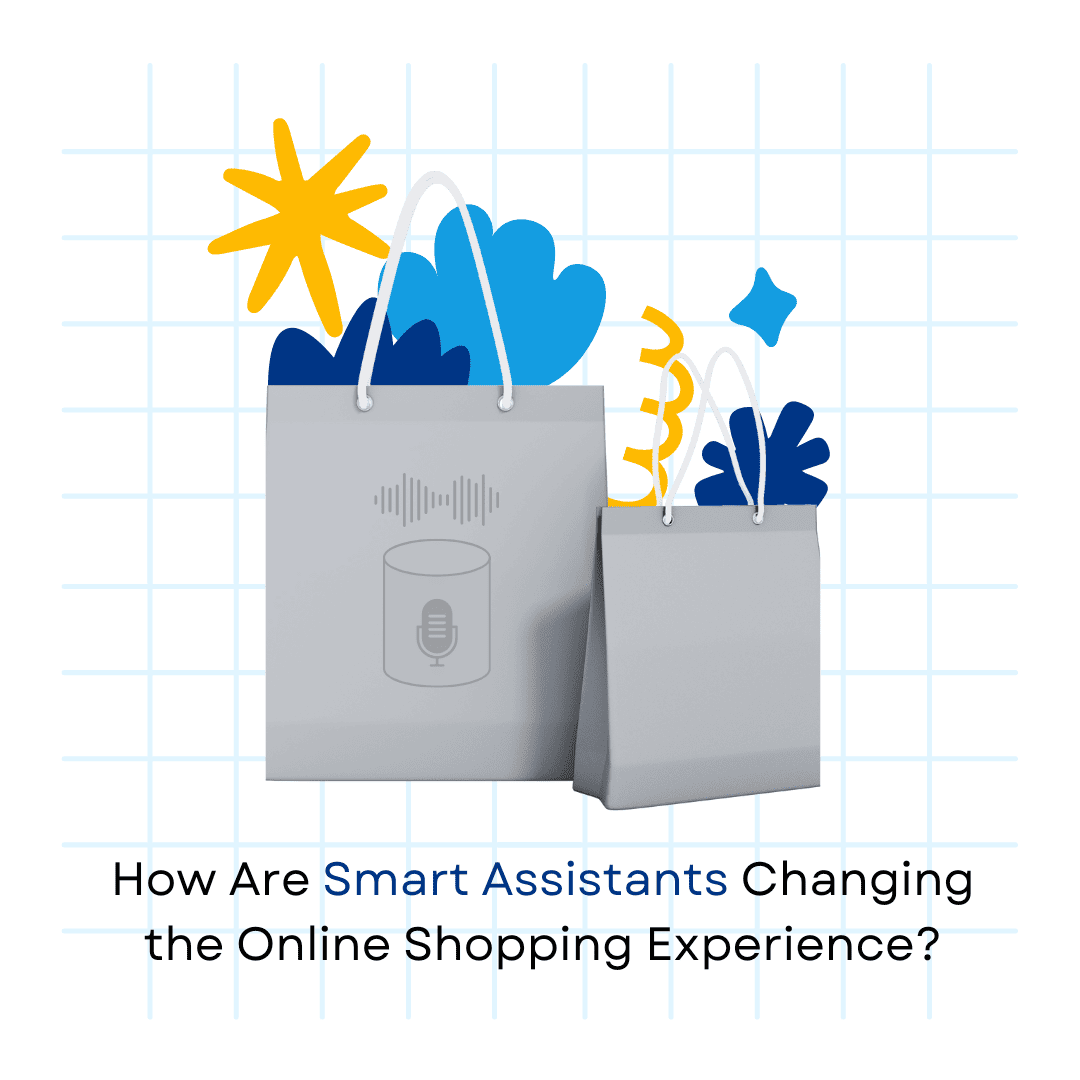How Are Smart Assistants Changing the Online Shopping Experience? Smart assistants like Alexa and Google…
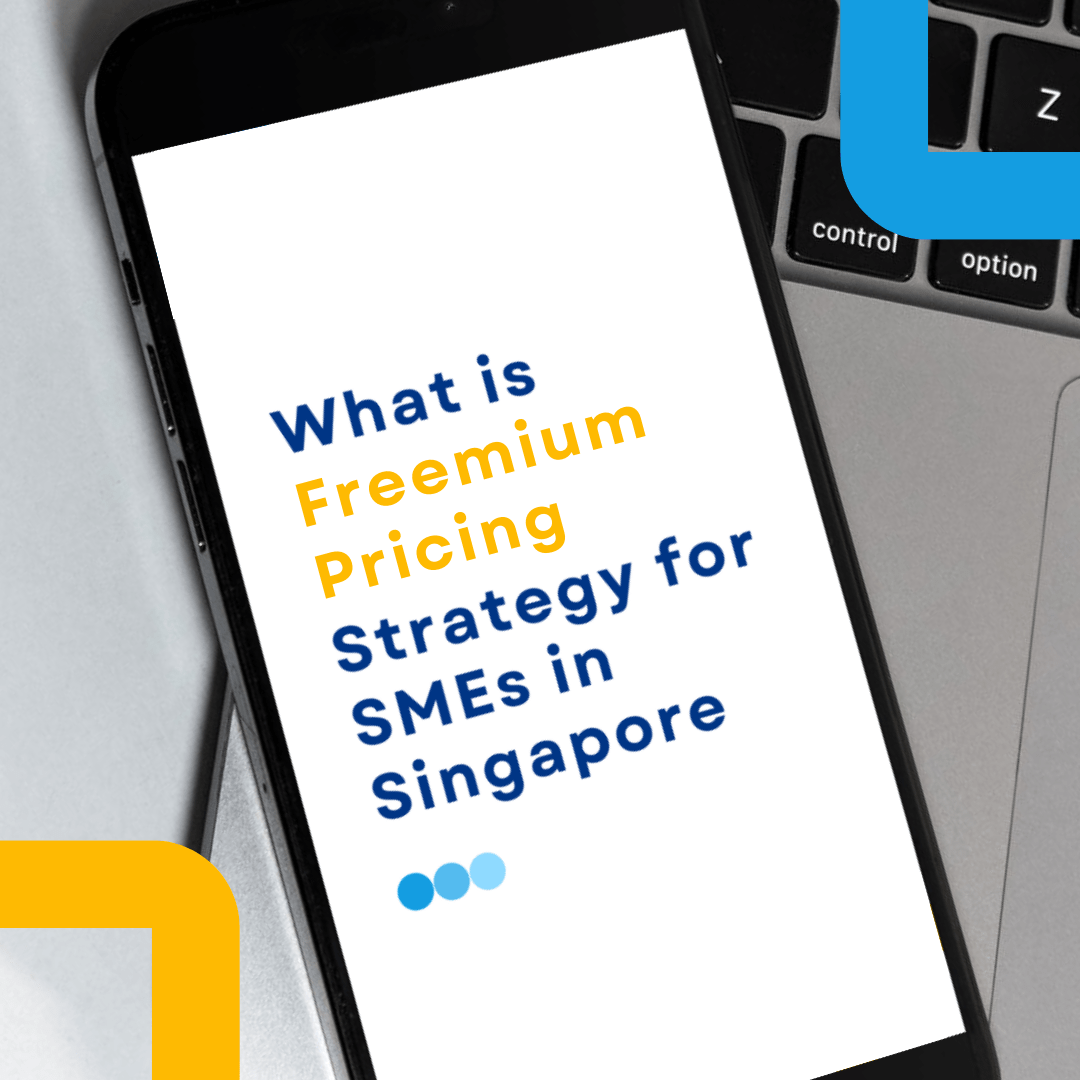
What is Freemium Pricing Strategy for SMEs in Singapore
What is Freemium Pricing Strategy for SMEs in Singapore
Freemium pricing is a business model where a company offers a basic version of its product or service for free while charging for advanced features or functionality. This strategy aims to attract a large user base by lowering the barrier to entry, with the hope of converting a significant portion of free users into paying customers over time.
The term “freemium” combines “free” and “premium.” The model has roots in the software industry, where it was used to distribute software for free with an option to pay for additional features.
Many well-known companies use freemium pricing successfully. LinkedIn offers a free basic membership with options to upgrade to premium accounts that provide enhanced networking features. Dropbox provides a free storage limit with the option to pay for additional space. Spotify allows free streaming with ads and limited features, while premium subscribers enjoy ad-free listening, offline mode, and better sound quality. Similarly, CakeResume offers a free version of its resume-building tool with the option to upgrade for access to advanced templates and additional features.
How Does Freemium Pricing Work?
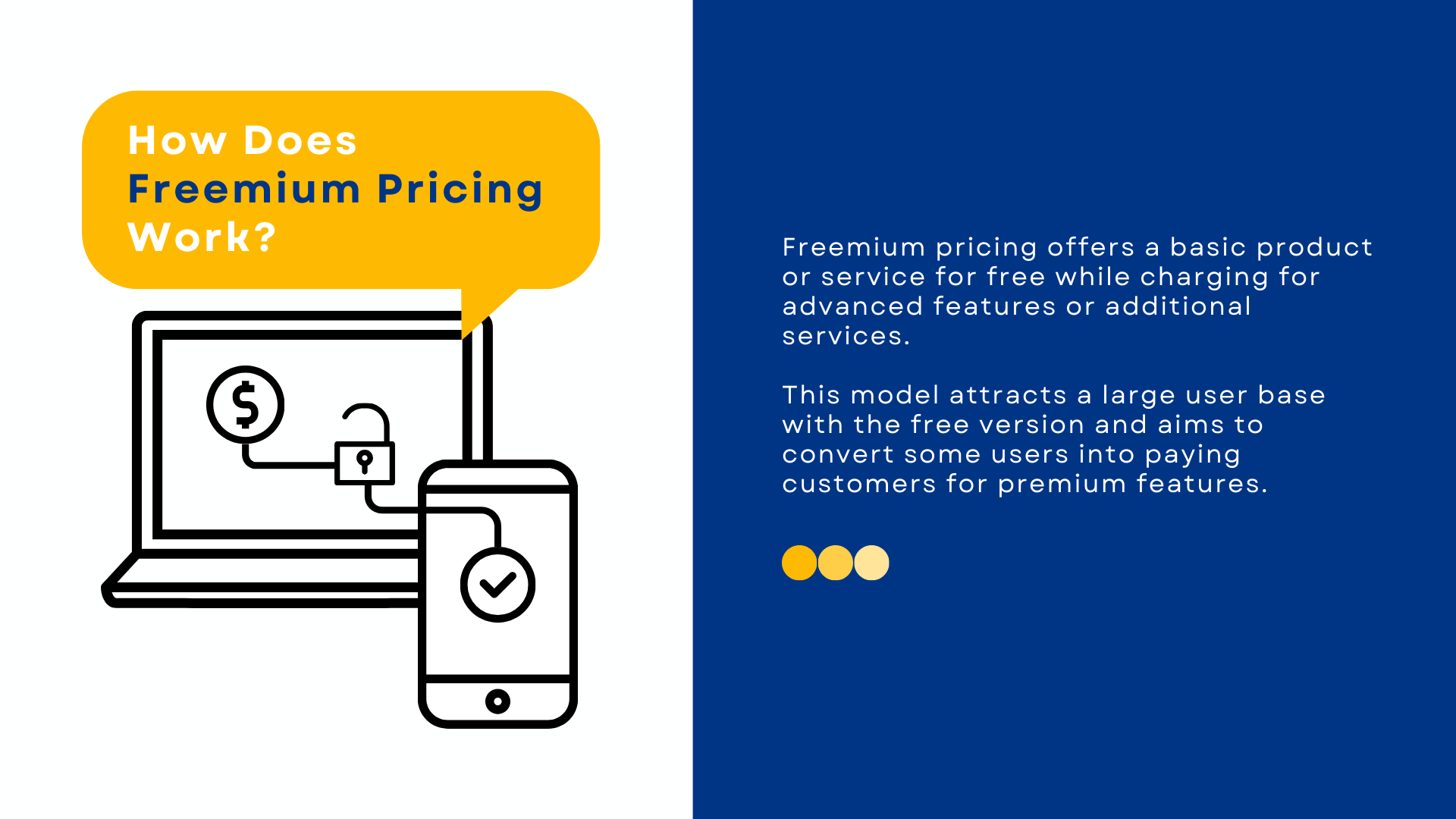
Freemium pricing involves offering a basic version of a product or service for free while charging for advanced features, functionality, or additional services. This model aims to attract a large user base with the free offering and then convert a portion of these users into paying customers for premium features.
Types of Freemium Models:

- Time-Limited Free Trials: Offer the full-featured product for free for a limited period. After the trial ends, users must pay to continue accessing the premium features. Example: Many software companies provide a 14-day free trial of their premium service.
- Feature-Limited Versions: Provide a free version with essential features, while advanced features are locked behind a paywall.Example: Dropbox’s free plan offers limited storage space, with additional space available for paid users.
- User-Limited Versions: Allow a free version with a limited number of users or usage, encouraging businesses to upgrade as they grow.Example: Slack offers a free version with limited message history and app integrations, with more extensive features available in paid plans.
Conversion Strategies:

- In-App Promotions: Display prompts and messages within the app to inform users about the benefits of upgrading to a premium plan. Example: Spotify regularly promotes its premium features to free users through in-app notifications and emails.
- Limited-Time Discounts: Offer discounts or special promotions to encourage free users to upgrade within a specific time frame. Example: LinkedIn often offers discounts on premium subscriptions to new users.
- Enhanced Customer Support: Provide priority customer support to premium users, highlighting the added value of the paid version. Example: CakeResume offers advanced templates and personalised advice for its premium users.
- Exclusive Features: Continuously introduce new and exclusive features for premium users, creating a compelling reason for free users to upgrade. Example: Dropbox offers advanced collaboration tools and increased storage capacity in its premium plans.
Benefits of Freemium Pricing for SMEs
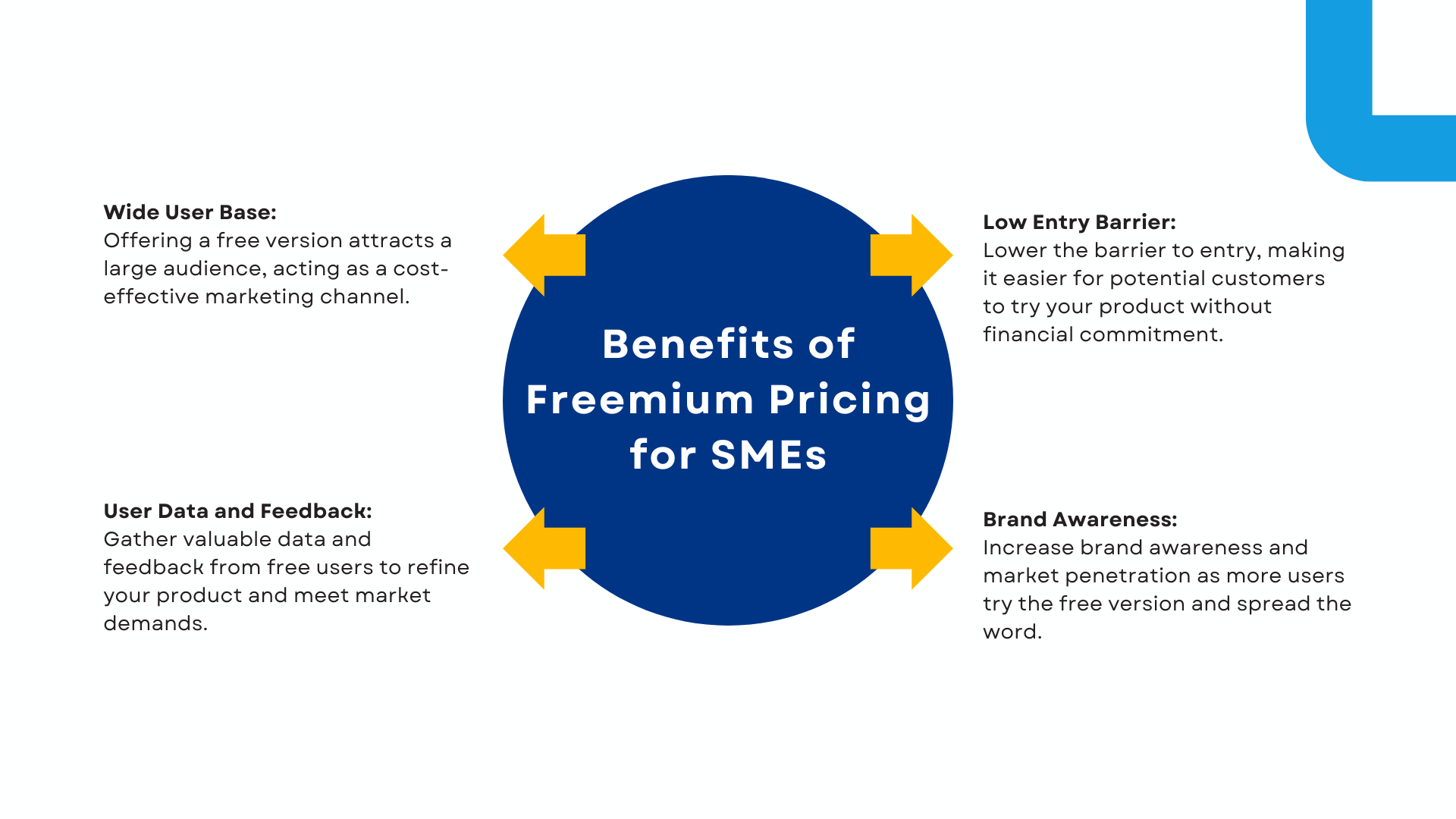
Wide User Base: Offering a free version attracts a large audience, acting as a cost-effective marketing channel.
User Data and Feedback: Gather valuable data and feedback from free users to refine your product and meet market demands.
Low Entry Barrier: Lower the barrier to entry, making it easier for potential customers to try your product without financial commitment.
Brand Awareness: Increase brand awareness and market penetration as more users try the free version and spread the word.
Implementing Freemium Pricing for Your SME
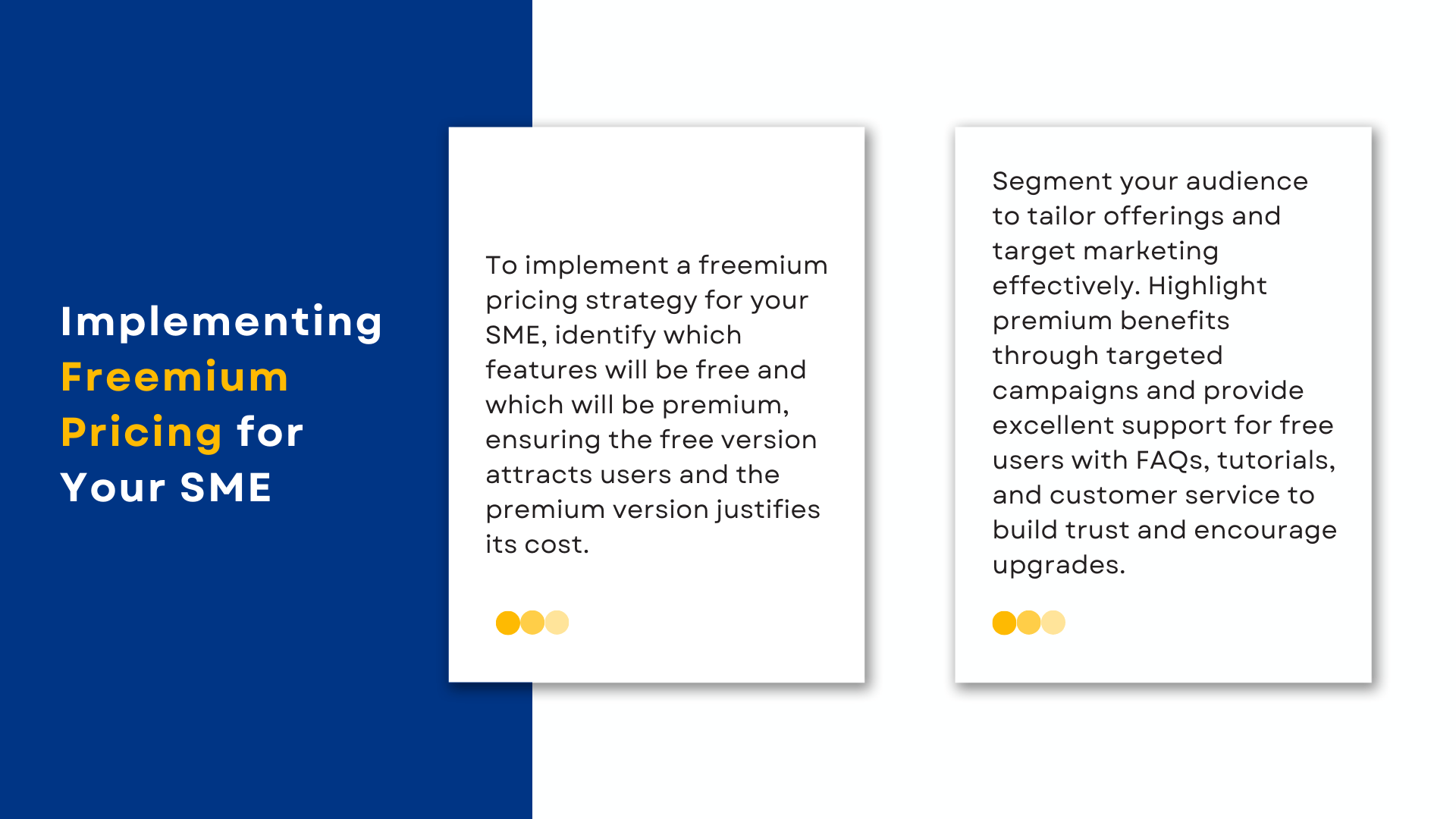
Implementing a freemium pricing strategy for your SME involves several key steps to ensure success.
Identify Core Features: Start by determining which features of your service will be available for free and which will be part of the premium offering. The free version should provide enough value to attract users, while the premium version should offer enhanced features that justify the cost.
Customer Segmentation: Segment your audience to tailor the freemium offering effectively. Understand the needs and behaviours of different customer segments to ensure each group sees value in both the free and premium versions. This helps in targeting your marketing efforts more precisely.
Marketing Strategy: Develop a robust marketing strategy to promote both the free and premium versions of your product. Highlight the benefits of upgrading to the premium version through targeted campaigns and clear messaging. Use testimonials, case studies, and feature comparisons to illustrate the added value of premium features.
User Support: Providing excellent support for free users is crucial. Ensure they have access to resources, such as FAQs, tutorials, and customer service, to help them make the most of the free version. Good support builds trust and encourages users to consider upgrading to the premium version for additional benefits.
FAQ Section for What is Freemium Pricing Strategy
What is Freemium Pricing?
Freemium pricing is a business model where a company offers a basic version of its product or service for free while charging for advanced features or functionality. This strategy aims to attract a large user base by lowering the barrier to entry, with the hope of converting a significant portion of free users into paying customers over time.
Why is Freemium Pricing Relevant for SMEs in Singapore?
Freemium pricing can help SMEs attract a large user base and generate leads by offering a no-cost entry point. It allows businesses to demonstrate value to potential customers, increase brand awareness, and gather valuable user data and feedback.
Which Companies Successfully Use Freemium Pricing?
- LinkedIn: Offers a free basic membership with options to upgrade to premium accounts for enhanced networking features.
- Dropbox: Provides a free storage limit with the option to pay for additional space.
- Spotify: Allows free streaming with ads and limited features, while premium subscribers enjoy ad-free listening, offline mode, and better sound quality.
- CakeResume: Offers a free version of its resume-building tool with advanced templates and features available in the premium version.
How Does Freemium Pricing Work?
Freemium pricing involves offering a basic version of a product or service for free while charging for advanced features. This model aims to attract a large user base with the free offering and then convert a portion of these users into paying customers for premium features.
What Are the Types of Freemium Models?
- Time-Limited Free Trials: Offer the full-featured product for free for a limited period.
- Example: Many software companies provide a 14-day free trial of their premium service.
- Feature-Limited Versions: Provide a free version with essential features, while advanced features are locked behind a paywall.
- Example: Dropbox’s free plan offers limited storage space, with additional space available for paid users.
- User-Limited Versions: Allow a free version with a limited number of users or usage, encouraging businesses to upgrade as they grow.
- Example: Slack offers a free version with limited message history and app integrations, with more extensive features available in paid plans.
What Are Some Common Conversion Strategies?
- In-App Promotions: Display prompts and messages within the app to inform users about the benefits of upgrading.
- Example: Spotify promotes its premium features through in-app notifications and emails.
- Limited-Time Discounts: Offer discounts or special promotions to encourage free users to upgrade.
- Example: LinkedIn offers discounts on premium subscriptions to new users.
- Enhanced Customer Support: Provide priority customer support to premium users.
- Example: CakeResume offers advanced templates and personalised advice for premium users.
- Exclusive Features: Continuously introduce new and exclusive features for premium users.
- Example: Dropbox offers advanced collaboration tools and increased storage capacity in its premium plans.
What Are the Benefits of Freemium Pricing for SMEs?
- Wide User Base: Offering a free version attracts a large audience, acting as a cost-effective marketing channel.
- User Data and Feedback: Gather valuable data and feedback from free users to refine your product.
- Low Entry Barrier: Lower the barrier to entry, making it easier for potential customers to try your product without financial commitment.
- Brand Awareness: Increase brand awareness and market penetration as more users try the free version and spread the word.
How Can SMEs Implement Freemium Pricing?
- Identify Core Features: Determine which features will be free and which will be premium.
- Customer Segmentation: Segment your audience to tailor the freemium offering effectively.
- Marketing Strategy: Develop a robust marketing strategy to promote both free and premium versions.
- User Support: Provide excellent support for free users to encourage conversion to the premium version.
Conclusion
Freemium pricing is a powerful strategy for SMEs in Singapore, offering a way to attract a large user base and convert them into paying customers. By understanding the types of freemium models, implementing effective conversion strategies, and recognising the benefits, SMEs can leverage this approach to drive growth and increase brand awareness. Offering a free version of your product or service lowers the barrier to entry, while premium features provide additional value that encourages users to upgrade.

